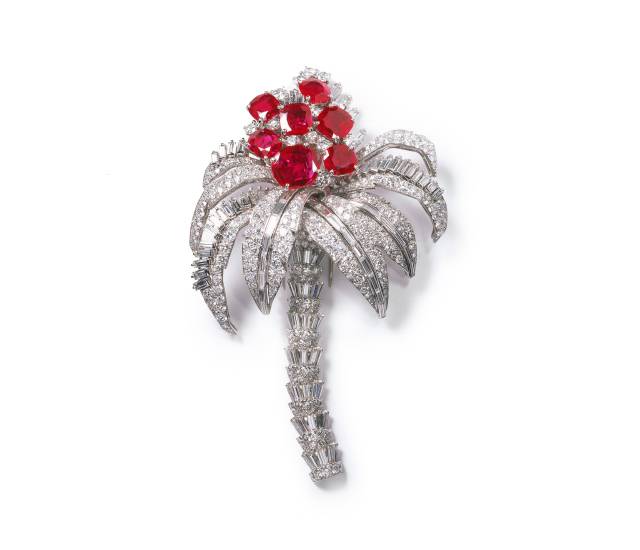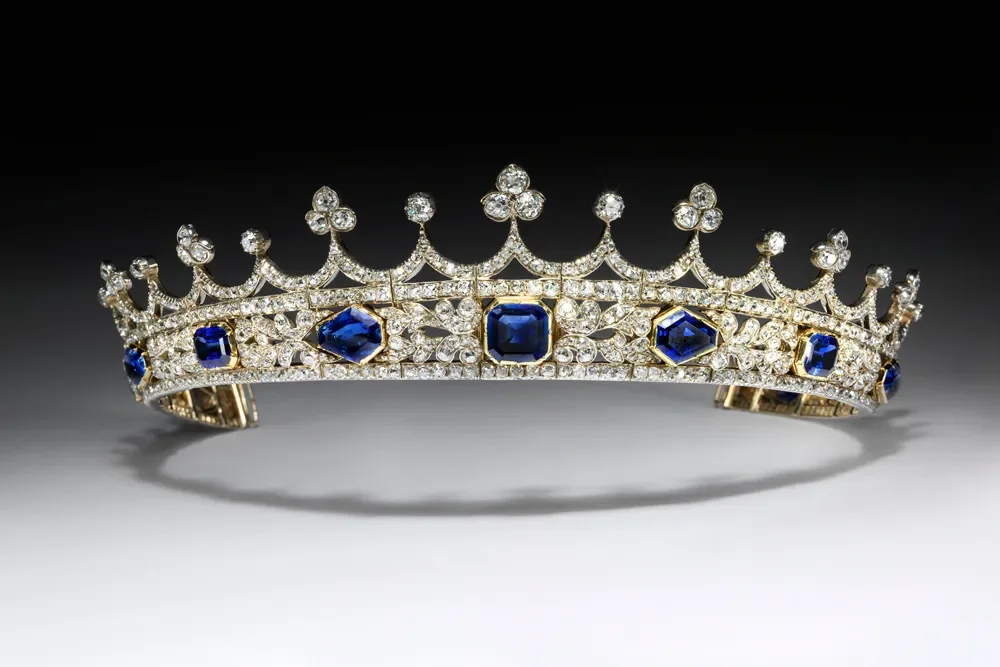The Best of Cartier at the Grand Palais, Paris
Palm Tree Brooch, 1957 - Photo : N. Welsh, Collection Cartier © Cartier
Cartier: Style and History, described as the most comprehensive Cartier exhibition ever, will open at the Grand Palais in Paris on December 4, showcasing some 600 creations by the famed French luxury Maison, from jewelry and time pieces to elegant objet d’art. Curated by Laurent Salomé and Laure Dalon, the exhibition aims to present Cartier pieces in their social and artistic contexts, and includes pieces from the company’s archives, as well as pieces on loan from the collection of Queen Elizabeth II, such as the tiara Catherine Duchess of Cambridge recently wore at her wedding to Prince William and pieces from the collection of the late Grace Kelly.
Ahead of the opening, BLOUIN Lifestyle talked to Pierre Rainero, image and heritage director for the venerable Parisian firm.
Cartier started to create an archive department back in the 1970s, while at the same time buying back some key pieces. How big is the archive and collection today?
We bought the first pieces back at auction in Geneva — a 1923 mystery clock — in 1973. At first we didn’t buy with a clear view of building a collection, but at the same time, it was felt that to really show what Cartier is and was then, there was nothing better than the objects themselves. And in 1983, we decided to seriously build the collection, creating a separate department, Cartier Collection, and putting in place a buying policy. It has kept on growing so well than in 1989, the first important exhibition took place the Museum du Petit Palais. We don’t actually create these exhibitions; we propose pieces we have in the collection to the institutions to organize what they want.
So how many pieces do you have today and are you still buying?
We have close to 1,500 pieces and yes, we’re still buying, though we do think we are at a level of maturity now. Most of the different creative expressions and different savoir faire are more or less covered. There are now two ways of continuing: if we find a “better” piece, i.e. it’s an earlier example of one type of creation, or a different expression, we may have a bracelet but not the necklace.
What did you buy recently?
Two years ago we bought an important ruby necklace owned by Liz Taylor and I remember it very well because we were on the phone from Singapore when we were bidding for it.
There have been several exhibitions of Cartier pieces, most recently in Madrid and in Shenyang, China. How different is this one at the Grand Palais?
Every exhibition is different because they are curated by different museum experts and not by us. For the Grand Palais, this is the most important one ever, because of the size — 600 pieces gathered in a single exhibition. Laure Dalon practically had an office in our premises in Paris, having access to all the archives, and she also went regularly to Geneva where all the actual pieces are kept.
Mystery Clock, 1923 - Photo : N. Herrmann, Collection Cartier © Cartier
Tell me about some of the highlights?
Pieces from the private collections that have never been exhibited before. The Queen of England agreed to loan some pieces from her private collection. You will have the Queen's Williamson diamond brooch, an incredible diamond, and several pieces from the private collection of Princess Grace. From our own collection, there will be the greatest gathering of Mystery Clocks in one room, eighteen of them. Another focal point will be 26 tiaras!
Tell me about the pieces from the collection of Princess Grace?
She had many different pieces and this is very much linked to what jewelry is about for Kings and Queens. She had ceremonial jewelries, like a tiara made of three ruby clips that could also be worn separately. There is her engagement ring that Prince Rainier bought her, but there are also what I call intimate jewelry pieces, not there to express status or power, just something that was pleasing her. You have poodle brooches, a very moving brooch of a hen on top of three eggs, and you cannot fail to see the link of her three kids in pieces like these.
Cartier: Style and History runs from December 4, 2013 to February 16, 2014 at the Grand Palais in Paris.
As first published for BlouinArtinfo.com





